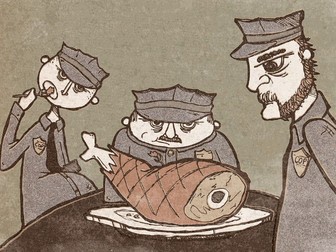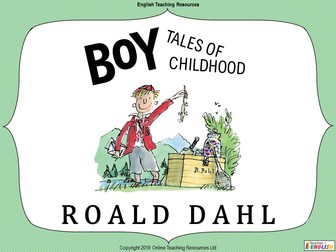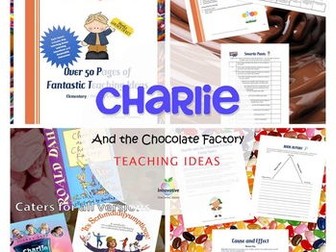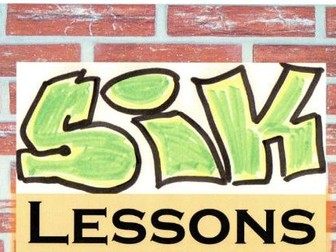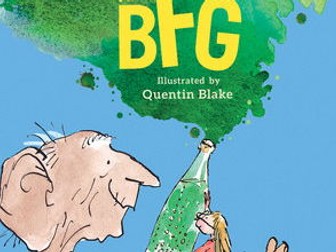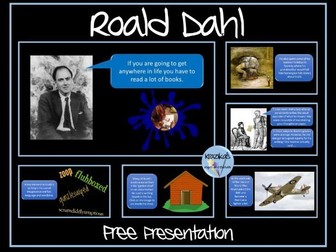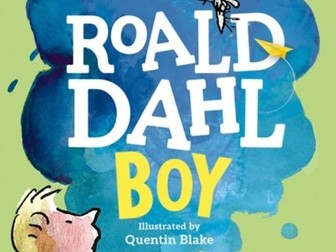Lamb to the Slaughter: Roald Dahl
<p>This series of four lessons on Roald Dahl’s ‘Lamb to the Slaughter’ breaks the story into four extracts and four distinct but interconnected lessons.</p>
<p>Lesson 1: 16 slides<br />
Lesson 2: 16 slides<br />
Lesson 3: 14 slides<br />
Lesson 4: 16 slides</p>
<p>Each lesson contains key questions and tasks relating to the story. Students are encouraged to think about Dahl’s suspense, characterisation, and use black humour. Key vocabulary is introduced and Dahl’s structure is dissected, with students making predictions and debating what might happen next as the story progresses. The nature of Mary Maloney’s marriage is discussed, as is the significance of her pregnancy, and the symbolic use of the leg of lamb in her infamous crime. At the end of the fourth lesson, we think about how Dahl uses the story symbolically and allegorically to comment on attitudes to gender in the 1950s.</p>
<p>Questions, discussion points, and tasks are included for students. There are multiple tasks to strengthen analytical writing (with clearly structured model paragraphs included), and more creative tasks are featured, too, including diary entries and newspaper writing.</p>
<p>Copies of all four extracts are included in this resource.</p>
<p>There are at least 4 lessons here, but - depending on the pace of your classes - this could be stretched into more. This series of lessons is ideal for KS3.</p>
<p>PowerPoints and extracts are saved as PDFs.</p>
